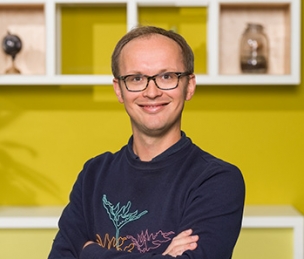Displaying 1 - 6 of 6
-
Dingemanse, M. (2013). Ideophones and gesture in everyday speech. Gesture, 13, 143-165. doi:10.1075/gest.13.2.02din.
Abstract
This article examines the relation between ideophones and gestures in a corpus of everyday discourse in Siwu, a richly ideophonic language spoken in Ghana. The overall frequency of ideophone-gesture couplings in everyday speech is lower than previously suggested, but two findings shed new light on the relation between ideophones and gesture. First, discourse type makes a difference: ideophone-gesture couplings are more frequent in narrative contexts, a finding that explains earlier claims, which were based not on everyday language use but on elicited narratives. Second, there is a particularly strong coupling between ideophones and one type of gesture: iconic gestures. This coupling allows us to better understand iconicity in relation to the affordances of meaning and modality. Ultimately, the connection between ideophones and iconic gestures is explained by reference to the depictive nature of both. Ideophone and iconic gesture are two aspects of the process of depiction -
Dingemanse, M., Torreira, F., & Enfield, N. J. (2013). Is “Huh?” a universal word? Conversational infrastructure and the convergent evolution of linguistic items. PLoS One, 8(11): e78273. doi:10.1371/journal.pone.0078273.
Abstract
A word like Huh?–used as a repair initiator when, for example, one has not clearly heard what someone just said– is found in roughly the same form and function in spoken languages across the globe. We investigate it in naturally occurring conversations in ten languages and present evidence and arguments for two distinct claims: that Huh? is universal, and that it is a word. In support of the first, we show that the similarities in form and function of this interjection across languages are much greater than expected by chance. In support of the second claim we show that it is a lexical, conventionalised form that has to be learnt, unlike grunts or emotional cries. We discuss possible reasons for the cross-linguistic similarity and propose an account in terms of convergent evolution. Huh? is a universal word not because it is innate but because it is shaped by selective pressures in an interactional environment that all languages share: that of other-initiated repair. Our proposal enhances evolutionary models of language change by suggesting that conversational infrastructure can drive the convergent cultural evolution of linguistic items.Additional information
http://www.plosone.org/article/info%3Adoi%2F10.1371%2Fjournal.pone.0078273#s6 -
Enfield, N. J., Dingemanse, M., Baranova, J., Blythe, J., Brown, P., Dirksmeyer, T., Drew, P., Floyd, S., Gipper, S., Gisladottir, R. S., Hoymann, G., Kendrick, K. H., Levinson, S. C., Magyari, L., Manrique, E., Rossi, G., San Roque, L., & Torreira, F. (2013). Huh? What? – A first survey in 21 languages. In M. Hayashi, G. Raymond, & J. Sidnell (
Eds. ), Conversational repair and human understanding (pp. 343-380). New York: Cambridge University Press.Abstract
Introduction
A comparison of conversation in twenty-one languages from around the world reveals commonalities and differences in the way that people do open-class other-initiation of repair (Schegloff, Jefferson, and Sacks, 1977; Drew, 1997). We find that speakers of all of the spoken languages in the sample make use of a primary interjection strategy (in English it is Huh?), where the phonetic form of the interjection is strikingly similar across the languages: a monosyllable featuring an open non-back vowel [a, æ, ə, ʌ], often nasalized, usually with rising intonation and sometimes an [h-] onset. We also find that most of the languages have another strategy for open-class other-initiation of repair, namely the use of a question word (usually “what”). Here we find significantly more variation across the languages. The phonetic form of the question word involved is completely different from language to language: e.g., English [wɑt] versus Cha'palaa [ti] versus Duna [aki]. Furthermore, the grammatical structure in which the repair-initiating question word can or must be expressed varies within and across languages. In this chapter we present data on these two strategies – primary interjections like Huh? and question words like What? – with discussion of possible reasons for the similarities and differences across the languages. We explore some implications for the notion of repair as a system, in the context of research on the typology of language use.
The general outline of this chapter is as follows. We first discuss repair as a system across languages and then introduce the focus of the chapter: open-class other-initiation of repair. A discussion of the main findings follows, where we identify two alternative strategies in the data: an interjection strategy (Huh?) and a question word strategy (What?). Formal features and possible motivations are discussed for the interjection strategy and the question word strategy in order. A final section discusses bodily behavior including posture, eyebrow movements and eye gaze, both in spoken languages and in a sign language.
-
Dingemanse, M. (2009). Ideophones in unexpected places. In P. K. Austin, O. Bond, M. Charette, D. Nathan, & P. Sells (
Eds. ), Proceedings of the 2nd Conference on Language Documentation and Linguistic Theory (pp. 83-97). London: School of Oriental and African Studies (SOAS).Additional information
http://ideophone.org/publications/LDLT2/ -
Dingemanse, M. (2009). The enduring spoken word [Comment on Oard 2008]. Science, 323(5917), 1010-1011. doi:10.1126/science.323.5917.1010b.
-
Dingemanse, M. (2009). The selective advantage of body-part terms. Journal of Pragmatics, 41(10), 2130-2136. doi:10.1016/j.pragma.2008.11.008.
Abstract
This paper addresses the question why body-part terms are so often used to talk about other things than body parts. It is argued that the strategy of falling back on stable common ground to maximize the chances of successful communication is the driving force behind the selective advantage of body-part terms. The many different ways in which languages may implement this universal strategy suggest that, in order to properly understand the privileged role of the body in the evolution of linguistic signs, we have to look beyond the body to language in its socio-cultural context. A theory which acknowledges the interacting influences of stable common ground and diversified cultural practices on the evolution of linguistic signs will offer the most explanatory power for both universal patterns and language-specific variation.

Share this page